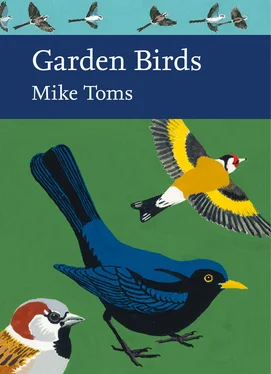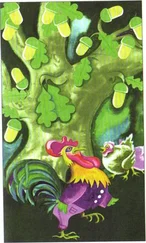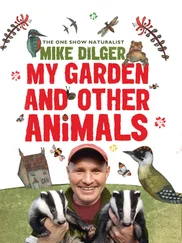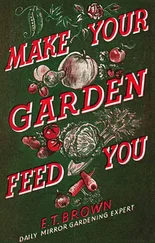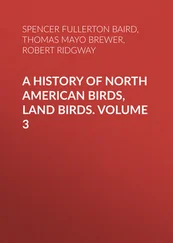URBAN BIRD COMMUNITIES
Surprisingly perhaps, one in five of the world’s 10,000 or so bird species is found in the highly urbanised landscapes of major cities, including 36 species that have been identified by the IUCN global Red List as threatened with extinction. (Aronson et al., 2014). Globally, the species richness of urban bird communities ranges from 24 species to 368, with a global median of 112.5 species (Aronson et al., 2014). As just noted, a number of studies, typically involving work carried out within a single city, have suggested that the process of urbanisation results in urban bird communities that are becoming increasingly similar over time, and dominated by a few key species. This process is known as homogenisation and is thought to come about because urbanisation not only extirpates native species from an area but also promotes the establishment of non-native species capable of adapting to the new conditions (Luck & Smallbone, 2010). Although these new conditions tend to be similar in cities across the world, they do not in themselves promote the same species winners; instead, it is our preference for certain species (transporting them to new settlements) that has resulted in the homogenisation seen at a global scale (McKinney, 2006).
In their review of the bird communities of 54 cities, spread over 36 countries and 6 continents, Aronson et al. (2014) found that cities tended to retain similar compositional patterns within their distinct biogeographic regions. While certain non-native species were shared across many of the cities studied, the urban communities had not yet become taxonomically homogenised at a global scale – they retained the characteristics of their local region pool. Four species were found in more than 80 per cent of the cities examined; these being the familiar Feral Pigeon, House Sparrow, Starling and Barn Swallow Hirundo rustica. With the exception of Australasia, the proportion of non-native species found within each urban community was similar (at 3 per cent), Australasia being somewhat higher because of the large number of non-native species introduced into New Zealand by settlers. Work within Europe (Jokimäki & Kaisanlahti-Jokimäki, 2003; Clergeau et al., 2006) suggests that urbanisation here might bring about homogenisation by decreasing the abundance of ground-nesting species and those preferring bush-shrub habitats, but also noting that it is difficult to generalise because of the effects of latitude and diversity in the urban habitats studied.
What is interesting about species seemingly well adapted to the urban environment is that they tend to share a number of traits (Leveau, 2013). They tend to be omnivorous in their diet, largely sedentary in habits and able to utilise a range of artificial nesting sites (Máthé & Batáry, 2015). Table 1highlights the broad ecological traits of the garden bird species considered in this book. As we have seen, omnivores and granivores (seed-eating species) tend to dominate the garden bird community, with insectivores often poorly represented. This suggests that invertebrate populations within gardens and the wider urban environment may not be sufficient to support populations of insect-eating birds. It also has implications for breeding success more widely, since most small birds feed their chicks on invertebrates. Work by Croci & Clergeau (2008) also suggests that ‘urban adapter’ species are those that are sedentary in habits and omnivorous, though with the additional traits of preferring forest environments, being widely distributed, and being high-nesters with large wingspans. Croci & Clergeau (2008) also note that ‘urban avoider’ species tend to be those that allocate more energy to their breeding attempts than ‘urban adaptor’ species, a trait that might make it difficult for them to adapt to new environments. Logically, given the absence of larger and older trees with natural cavities, you might predict cavity-nesting birds to be less common in urban environments. However, the presence of substantial numbers of nest boxes appears to help at least some of these species, most notably the tits, though those requiring large cavities often lose out.
TABLE 1. Common garden birds, their ecological traits and status. * Goldcrest and Long-tailed Tit are open-nesting species, whose nest is fully domed. Conservation status is derived from the Birds of Conservation Concern (BOCC) List, which classifies species as Red-, Amber- or Green-listed based on a number of criteria. Non-native species with feral populations are not assessed by BOCC.

That wild birds can take advantage of the opportunities afforded by human activities is evident from changes in urban-nesting gull populations within the UK, which have increased substantially over a short period of time; this increase has occurred despite the fact that coastal populations of the same species have been in decline. It is thought that much of this increase has been driven by the availability of food scraps on our urban streets and at landfill sites, coupled with the relatively predator-free nesting opportunities available (Ross-Smith et al., 2014).
Interestingly, much of the ecological work looking at urban birds has tended to adopt a binary approach, separating species into urban and non-urban classes and then looking for differences in their ecological and/or physiological traits (e.g. Møller, 2009). Such work has underlined, for example, that insectivores, cavity nesters and migrants are under-represented within urban bird communities, while species showing high rates of feeding innovation, high annual fecundity and high adult survival rates are over-represented. However, such an approach – where species are lumped into one or the other of these two groupings – fails to account for important differences in how individual species may respond to urbanisation, or to differences in how a species may respond in different parts of its geographic range. When you consider these differences, then many of the identified traits characteristic of one or other community disappear (Evans et al., 2011).
The nature of urban bird communities has been the subject of study and review for a number of years and several common patterns emerge. It appears, for example, that local factors are more important in determining the species richness of these communities than factors operating at a wider regional scale, and that urban communities respond positively to the availability of supplementary feeding and the structural complexity of local habitat, but negatively to the degree of human disturbance (Evans et al., 2009a). While there is likely to be continuing debate around this topic (e.g. Møller, 2014), it does appear that, at the species level, generalists are better suited to the urban environment than specialists, as are those species that nest off the ground. Generalist species are known to be less susceptible to, and may even benefit from, environmental disturbance of the sort associated with urbanisation (McKinney & Lockwood, 1999), and they are also the species that appear to be coping best with a changing global climate (Davey et al., 2012), something that may also be behind their apparent success in our towns, cities and gardens. Broader environmental tolerance is something that has been demonstrated in urban birds, most clearly through a study by Frances Bonier and colleagues, who compared the elevational and latitudinal distributions of 217 urban birds found in 73 of the world’s largest cities with the distributions of 247 rural congeners. The results of this work showed that urban bird species had markedly broader environmental tolerance than rural congeners, suggesting that a broad environmental tolerance may predispose some species to thrive within urban habitats (Bonier et al., 2007).
Читать дальше
